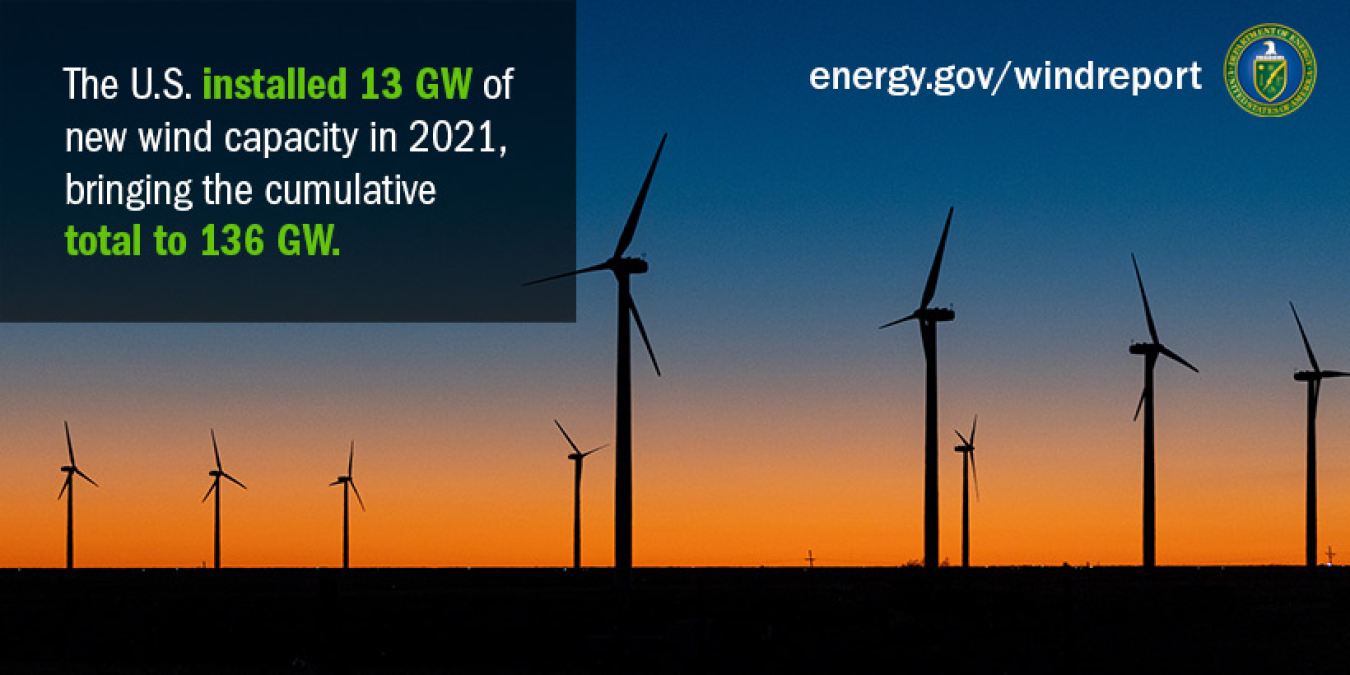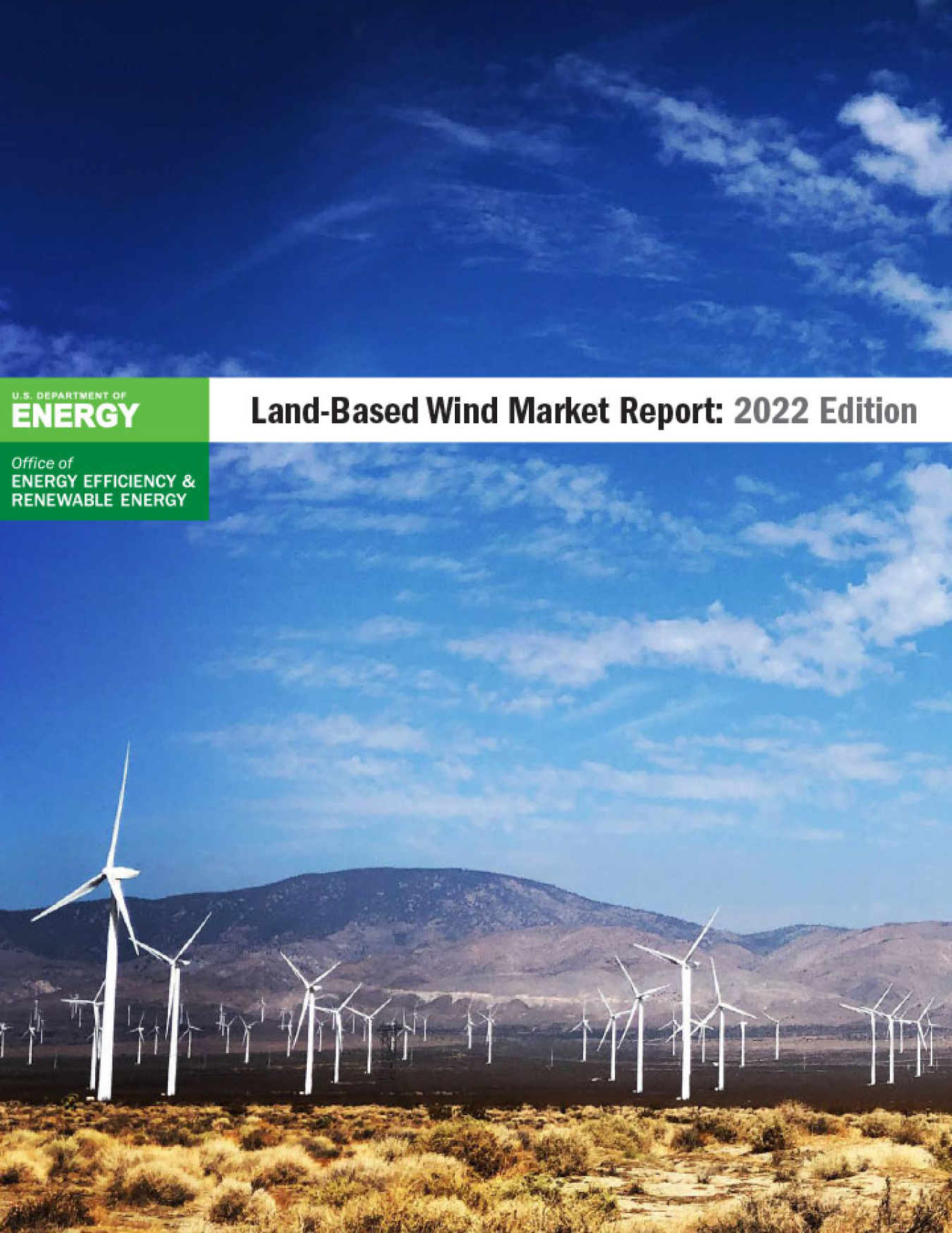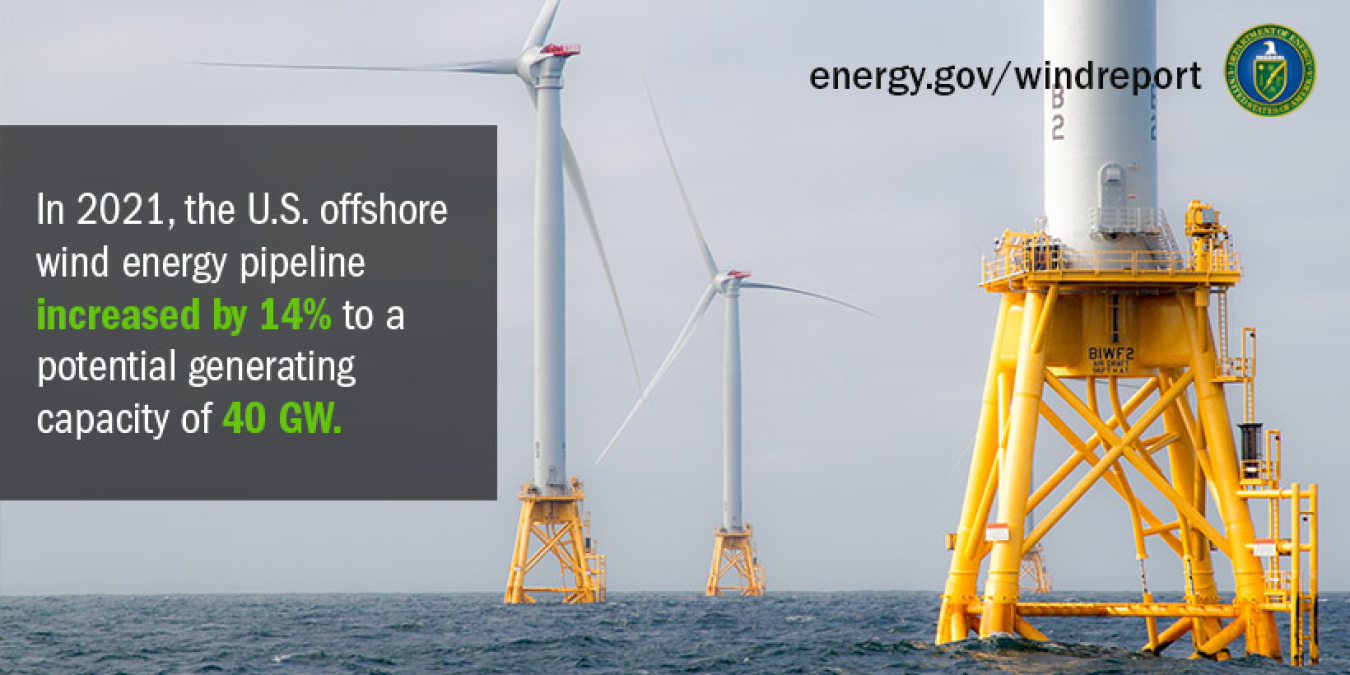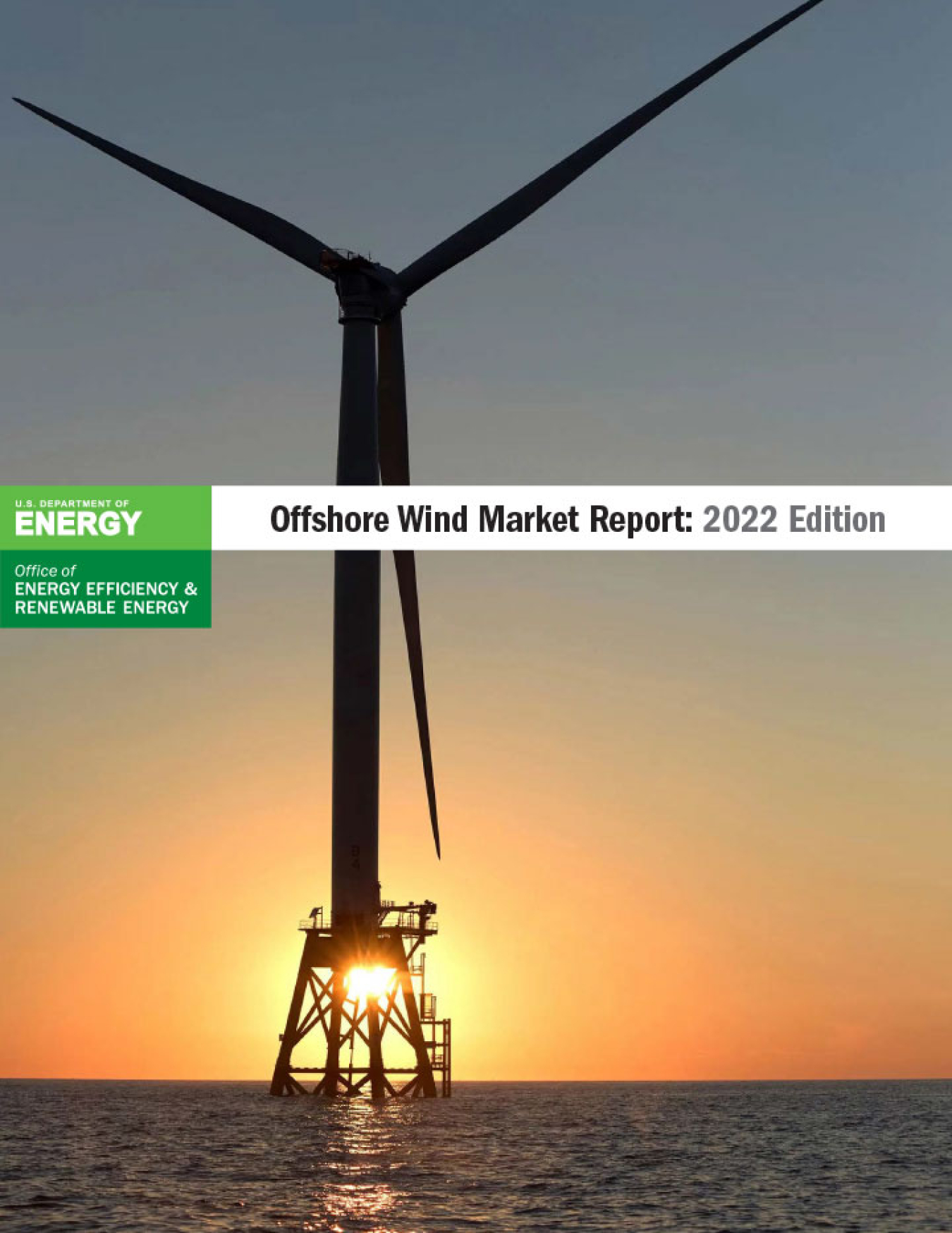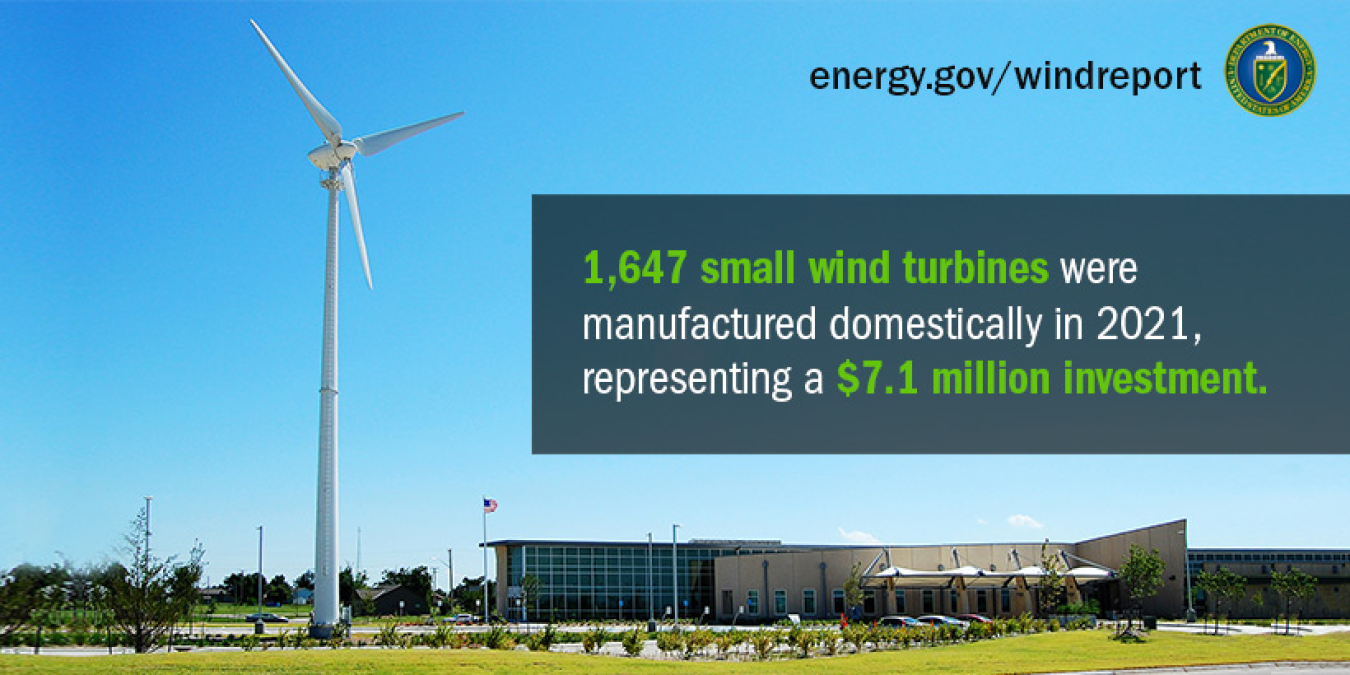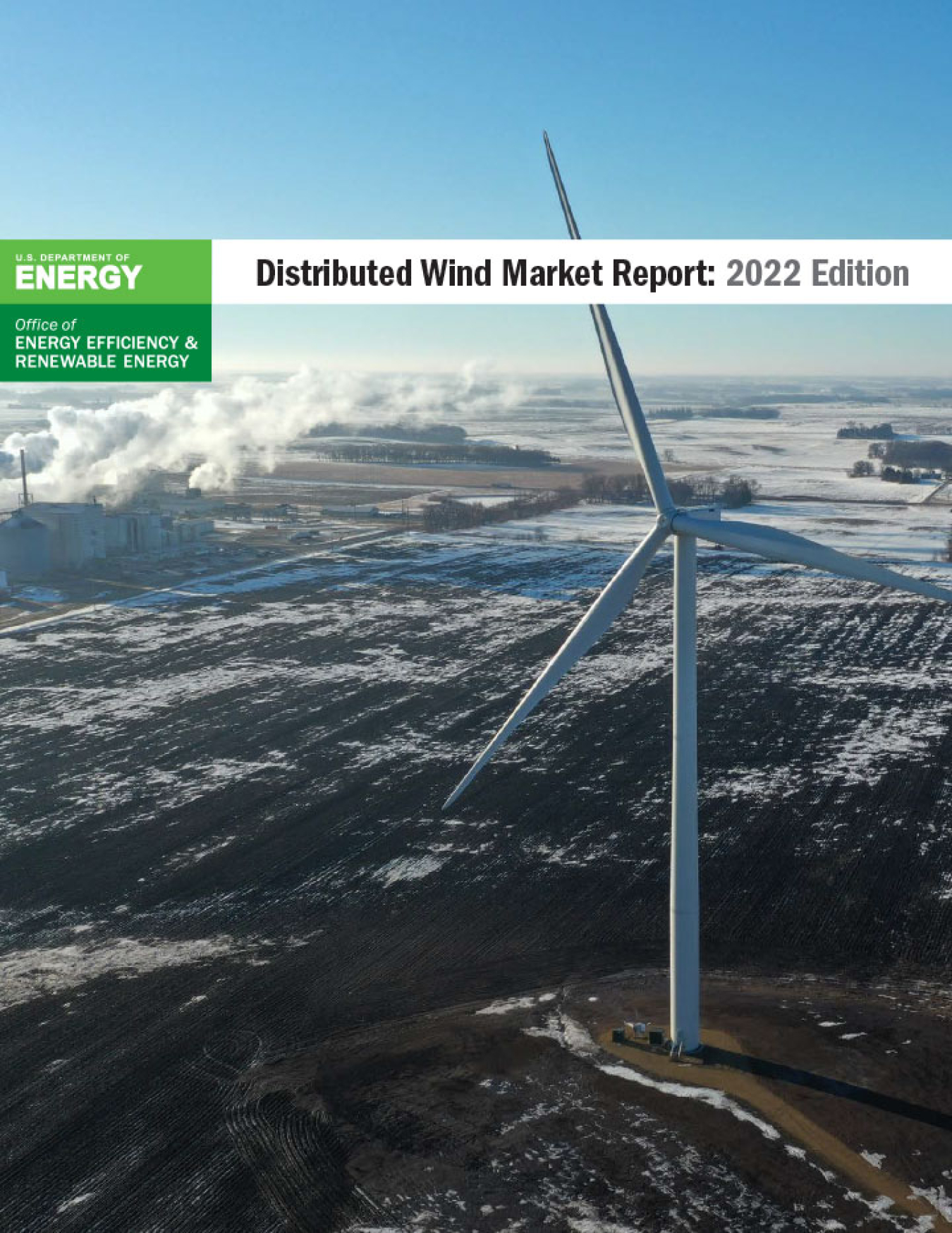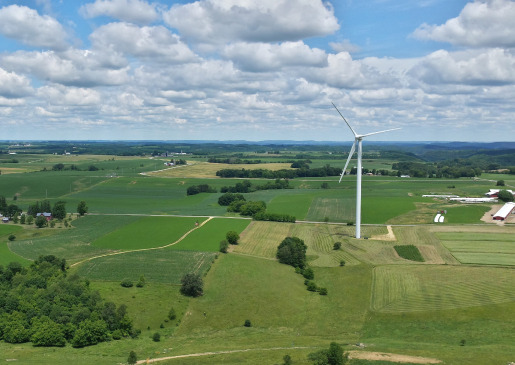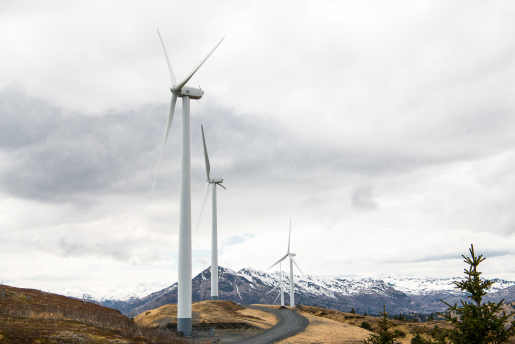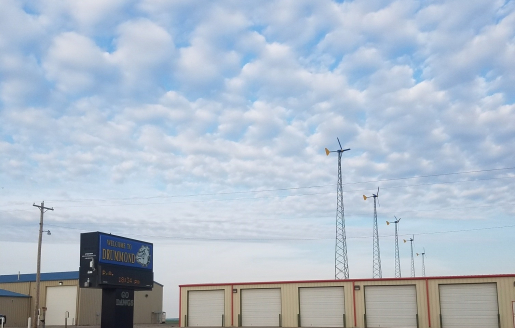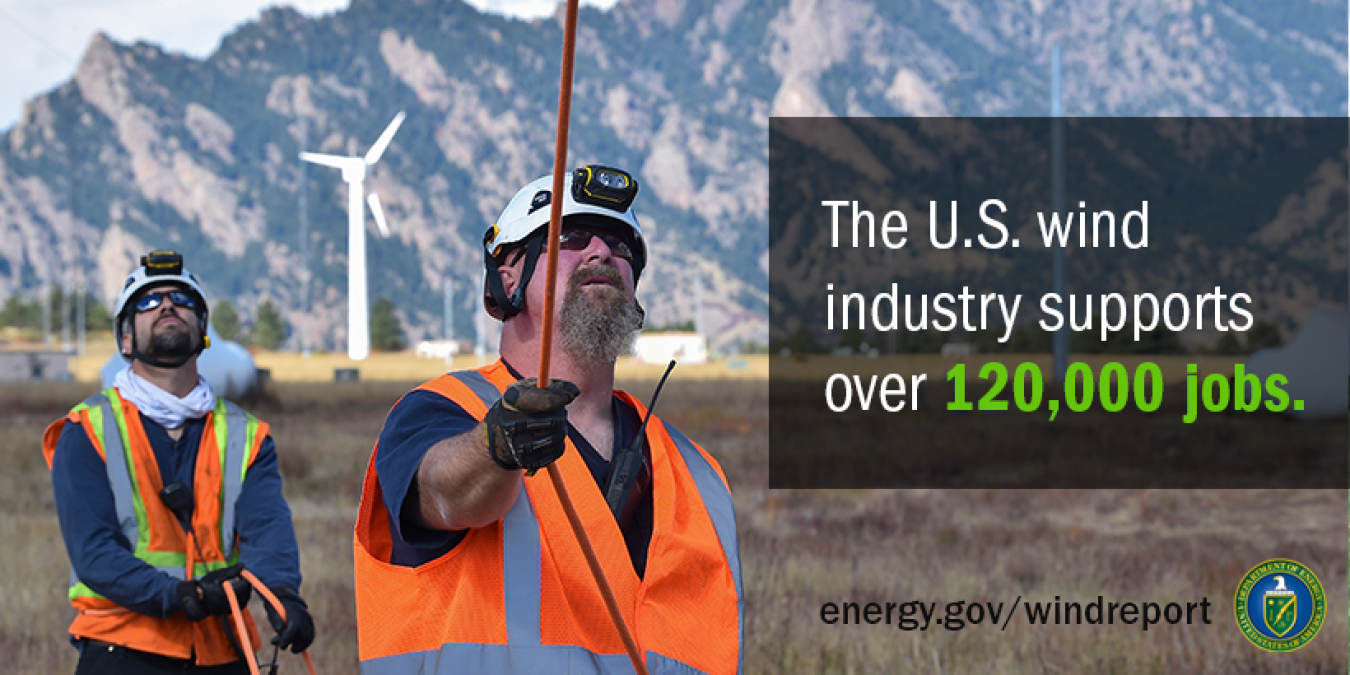
U.S. wind energy continued to grow in 2021, providing low-cost clean energy to millions of Americans. Three market reports released by the U.S. Department of Energy detail trends in wind development, technology, cost, and performance through the end of 2021 (and in offshore wind through May 2022).
These reports present a unique combination of publicly available, confidential, and proprietary data. They provide unbiased, independent, public reporting of the current state of the industry and provide insight into multi-year trends.
The U.S. wind industry installed 13,413 megawatts (MW) of new wind capacity in 2021, bringing the cumulative total to 135,886 MW. This is the second-highest amount of wind capacity installed in one year (behind 2020), and represents $20 billion of investment. Wind provides more than 9% of electricity nationwide over 50% in Iowa and South Dakota, and over 30% in Kansas, Oklahoma, and North Dakota.
Improvements in the cost and performance of wind power technologies, along with the Production Tax Credit, have driven wind energy capacity additions, yielding low-priced wind energy. Wind turbines continued to grow in size and power, with the average nameplate capacity of newly installed wind turbines at 3 MW—up 9% from 2020 and 319% since 1998−1999. The combined health, climate, and grid-system benefits of wind are more than 3 times its levelized cost of energy.
Download the Land-Based Wind Market Report: 2022 Edition.
Learn how wind energy can provide health and climate benefits that outweigh its costs.
Wind turbines have continued to grow in size. Read our blog to see how bigger turbines capture more energy and reduce costs.
Get the details on a few of the lesser known wind energy facts.
Driven by falling offshore wind prices, federal action, and state-level commitments, the U.S. offshore wind pipeline grew 14% over the previous year, with 40,083 MW now in various stages of development, including two fully operational projects totaling 42 MW. Expansion in the U.S. project pipeline was driven by the Bureau of Ocean Energy Management, which auctioned eight new lease areas in the Atlantic (including six in the New York Bight) and converted two California Call Areas into Wind Energy Areas, representing a net expansion in the pipeline of 4,759 MW. There are 19 projects in the U.S. offshore pipeline that have reached the permitting phase, and eight states have set offshore wind energy procurement goals totaling 39,322 MW by 2040.
Global offshore wind installations had a record year in 2021, totaling 17,398 MW of new capacity additions, pushing the global installed capacity to 50,623 MW from 257 projects. Turbine sizes continued to grow, with rotor diameters averaging 156 meters and turbine capacities averaging more than 7 MW. Trends that continued in 2021 included increased interest in using offshore wind to produce clean hydrogen, with the first project expected to be operational in 2022. The global pipeline for floating offshore wind energy more than doubled in 2021 to 60,746 MW.
Download the Offshore Wind Market Report: 2022 Edition.
Find out how offshore wind can produce hydrogen, in turn helping to decarbonize America’s energy future.
Learn more about efforts to develop America's vast offshore wind resources.
The U.S. distributed wind sector—which includes power from wind turbines installed near where the power will be used—added 11.7 MW of new distributed wind energy capacity with 1,751 new wind turbines installed across 15 states. This capacity represents $41 million in investment and brings the total installed capacity to 1,075 MW from more than 89,000 wind turbines across all 50 states, Puerto Rico, the U.S. Virgin Islands, and Guam. Small wind turbine retrofits—new turbines installed on existing towers and foundations—have become more common, accounting for 68% of small wind capacity additions in 2020 and 42% in 2021.
Download the Distributed Wind Market Report: 2022 Edition.
Three Places American Energy Consumers Are Using Local Wind Power >>
Learn how distributed wind energy is expanding across the nation and benefiting a wide range of organizations and communities.
Learn about key facts related to wind turbines used in distributed applications.
Distributed Wind Photo Gallery
Check out our Distributed Wind Photo Gallery for case studies and more information on distributed wind.
Learn More
-
 Through history, the use of wind power has waxed and waned,from the use of windmills in centuries past to high tech wind turbines on wind farms tod...
Through history, the use of wind power has waxed and waned,from the use of windmills in centuries past to high tech wind turbines on wind farms tod... -
Distributed wind systems are connected on the customer side of the meter to meet the onsite load or directly to distribution or microgrids.
-
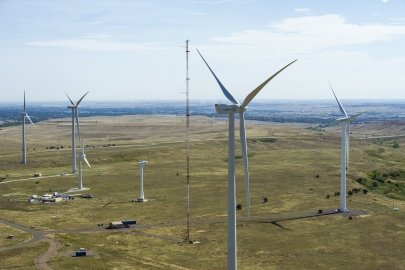 A date most movie buffs know by heart, October 21, 2015, is the day Marty McFly and Doc Brown travel in “Back to the Future Part II.”
A date most movie buffs know by heart, October 21, 2015, is the day Marty McFly and Doc Brown travel in “Back to the Future Part II.”
Energy By-the-Numbers
Curious about how wind energy adds up in the United States? Check out our Energy by the Numbers video!
Learn how wind turbines operate to produce clean power from an abundant, renewable resource—the wind.


